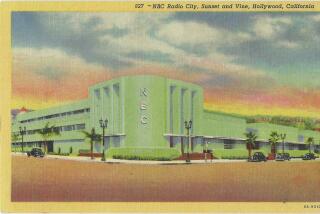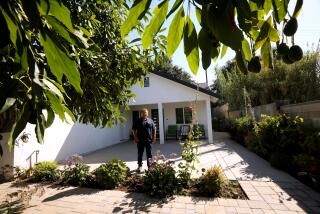New L.A. Area Code: Dial 310 for Confusion
- Share via
Los Angeles, long renowned for its various excesses, is about to gain yet another strange distinction.
It will become the area code capital of America.
At 2 a.m. Saturday, a large chunk of the 213 telephone zone will be broken off to form a third dialing code, a record for an American city. The new 310 area code will encompass not only Los Angeles but a number of smaller enclaves throughout the county, from Malibu to Montebello.
Some might look upon this event as an occasion for civic pride. New York City, L.A.’s historic rival, still has only two telephone area codes.
But many future 310ers--who are the users of about 2.4 million phone lines--view the change as dimly as they would . . . well, a wrong number in the middle of the night.
“Personally, we think it’s just absurd,” said West Hollywood Mayor Paul Koretz, who takes umbrage at the fact that his city--like nine others--will be sliced in two by 310’s oddly drawn boundaries.
Others are taking the change more personally.
“Hey, we’re 213. We’re Los Angeles. What’s this 310 business?” huffs South Bay resident Carol Damon. “I grew up in this area code. It’s like selling the house you grew up in.”
Callers who forget to use 310 will have their calls put through automatically for six months, phone company officials say. On May 2, the telephone companies will activate a recording instructing callers to redial using the new three-digit code.
The other good news, as far as the phone companies are concerned, is that the change will not affect rates.
But such promises do not appear to lessen the sense of loss, outrage and general disgruntlement that many 213-area phone customers are voicing. Telephone company officials say that they have received more complaints about the 213/310 split than when 818 was introduced to the San Fernando and San Gabriel valleys seven years ago.
According to sociologist James Katz, who studies the social effect of telephone technology for Bellcore, a New Jersey-based research consortium serving regional phone companies across the country, Californians in general are touchier about their area codes and telephone numbers than phone users in other states.
He notes that in the early 1960s, when telephone companies nationwide began abolishing two-letter prefixes (such as BU for Butterfield or TE for Telegraph) and replacing them with digits, the first organized opposition sprang up in California. The Anti-Digit Dialing League was founded in San Francisco by a man named Carl May. An engineer named Kent Gould promptly opened a Los Angeles chapter. The movement later spread to the East Coast, although it ultimately failed in its quest.
“There were writers and intellectuals and a whole spectrum of people who opposed digit dialing because they felt it was taking away a familiar part of people’s mental maps of their lives,” Katz said. In Los Angeles, long notorious for knocking down landmarks to build parking lots, that “mental map” is always in a state of flux. So, Katz theorizes, “when you take away the number, in a certain sense you’re erasing the identity. That’s why there is so much concern about the new area code in Los Angeles.”
Officials at Pacific Bell and General Telephone, which began planning for the change in 1984, are sympathetic, but insist they have no choice but to proceed.
“You get an identity any number of ways. It’s just hard to get an identity around an area code these days,” said Pacific Bell spokeswoman Kathleen Flynn. “Multiple area codes are a way of life here.”
Seven years ago, population growth dictated the need for the 818 area code. This time, the cause is a proliferation of machines--specifically, cellular phones, facsimile machines, beepers, computers with modems and other gadgetry that operate on telephone lines.
In 1984, for example, paging devices in Los Angeles used about 14,000 phone numbers and cellular phones about 7,000 phone numbers, according to Flynn. Today, beepers and mobile phones account for 168,000 and 203,000 phone numbers, respectively.
At this rate, phone company officials estimated that they would run out of 213-area phone numbers by the middle of next year.
Breaking off about 2.4 million phone lines from 213 and assigning them to 310 opens up about 5 million new numerical combinations for phone numbers, a supply which is expected to last through the year 2000.
The new dialing zone cuts a U-shaped swath across Los Angeles County. It begins at the ritzy coastal community of Malibu on the west, wraps in the South Bay and West Los Angeles and encompasses several communities in the eastern and southeastern parts of the county, such as Compton, Whittier and Downey.
Ten cities have been carved up by the newest calling area’s boundaries: Los Angeles, Bell Gardens, Commerce, Lynwood, South Gate, Beverly Hills, Culver City, West Hollywood, Hawthorne and Inglewood.
When the phone companies decided to create the 818 area code, they basically drew a line along the Santa Monica Mountains, which formed a natural border between large population centers. Only a few cities, including Monterey Park and South Pasadena, were split.
Today, Flynn says, “There are no natural boundaries left. It’s literally wall-to-wall people.”
In drawing the map for 310, the phone companies used calling patterns and the territory covered by local telephone exchanges as the main guidelines.
Will their decision create dialing dilemmas?
West Hollywood’s Mayor Koretz thinks so. “In a city this tiny--1.9 square miles--how is somebody going to know that if you want to dial one side of La Cienega it’s 213 and if you call the other side, it’s 310? It’s going to be very bizarre. If we were able to remain entirely in 213, we would be thrilled.”
In other quarters, the impending change is being viewed as little more than an inconvenience.
Long Beach Chamber of Commerce President John Higginson, for one, said he has observed “no great groundswell of discontent.”
Printers may be among the few who truly welcome the new area code. At the R & R print shop in West Hollywood, manager Bill Doberstein said orders for new business cards and letterheads bearing the new three-digit dialing sequence have brought in “a couple thousand dollars” over the last few weeks.
Pacific Palisades attorney Ronald Dean said the toughest part of getting a new area code will be reprogramming his computerized telephone speed dialer, which contains about 1,800 phone numbers. He estimates that about 500 of the numbers will need to have the digits 213 added to them.
The calling code change creates an identity crisis for an 8-year-old publication called Beverly Hills (213). According to publisher Seth Baker, the glossy tabloid, which profiles rich, fashionable and famous Westsiders, will not change its name, despite the fact that the bulk of that gilded city will be in the other calling zone.
“I’m from back east. Nobody there is really excited about being in 212,” the area code for much of New York City, said Baker who also publishes an Orange County weekly called Newport Beach (714); “213 has a great connotation. It has more or less always connoted the Beverly Hills area--the glitz, the good life, so to speak.”
But at least one person is banking on 310’s potential to become the area’s new status code.
Fred Hayman, the Beverly Hills retailer who started the Giorgio’s fashion and fragrance empire, said that as soon as he heard about the new area code, he instructed his lawyer to register a new trademark for him.
Beverly Hills 310.
“I think it’s a really great change,” said Hayman, who recently began selling a perfume called 273--the address of the exclusive boutique he helped found on Rodeo Drive. “Anything with Beverly Hills in it can’t be all bad.”
The New Area Code: 310
Here is a look at the general boundaries of the 310 area code that will take effect on Nov. 2. Ten cities, including Los Angeles, will be split by the new dialing code.
Phone company officials say that the geographic boundaries shown are approximate and that prefixes are a better guide to which area code a particular phone number will fall.
Prefixes in Divided Cities
Several cities will receive both the 213 and 310 area codes. To determine the correct area code in those communities, here is a list of telephone prefixes by area code.
Hawthorn * 213: 241 418 600 754 755 756 757 777 779 * 310: 219 330 331 332 412 419 644 671 672 673 674 675 676 677 679 970 973 978
Inglewood * 213: 241 418 565 600 717 750 751 752 753 754 755 756 757 758 759 777 778 779 786 789 971 * 310: 215 216 219 330 331 332 337 338 348 410 412 417 419 568 641 642 644 645 646 649 670 671 672 673 674 675 676 677 679 970 973 978
Beverly Hills * 213: 303 651 653 655 658 852 963 966 968 * 310: 205 247 271 273 274 275 276 278 281 285 288 289 550 652 657 659 854 855 858 859 967
Culver City * 213: 525 857 930 931 932 933 934 935 936 937 938 939 954 964 965 * 310: 202 204 280 287 313 390 391 397 398 558 559 572 836 837 389 840 842
West Hollywood * 213: 650 654 656 848 850 851 874 876 878 882 969 * 310: 205 247 271 273 274 275 276 278 281 285 288 289 550 652 657 659 854 855 858 859 967
Bell Gardens * 213: 560 562 771 773 * 310: 803 806 861 862 869 904 922 923 927 928 940
Commerce * 213: 720 721 722 724 725 726 727 728 887 888 889 * 310: 803 806 861 862 869 904 922 923 927 928 940
Lynwood * 213: 249 563 564 566 567 569 * 310: 537 603 604 605 608 609 631 632 635 637 638 639 761 762 763 764 886 898
South Gate * 213: 249 563 564 566 567 569 * 310: 803 806 861 862 869 904 922 923 927 928 940
Los Angeles * 213: All prefixes not listed below remain 213. * 310: 201 203 206-208 210 212 214 217 218 220 246 270 277 279 282 284 286 297 301 302 305 306 310 312 314-320 322-329 333-336 339 350 352 354 355 363 364 370-379 392-396 399-409 414 416 420-459 470-479 490-499 512-519 601 602 606 607 615 616 618 630 633 634 636 640 643 647 648 678 690-699 715 719 767-769 781-788 791-799 801 802 804 807 809 812-814 816 820-827 829-835 838 841 843 860 863-868 902 903 905-908 914 920 921 924-926 929 941-949 980-989
More to Read
Sign up for Essential California
The most important California stories and recommendations in your inbox every morning.
You may occasionally receive promotional content from the Los Angeles Times.














